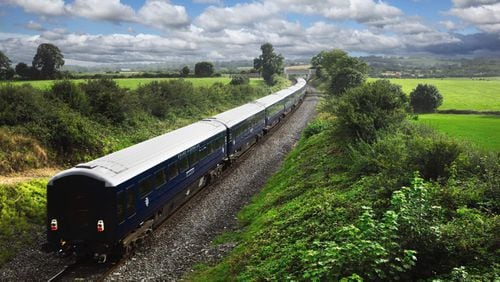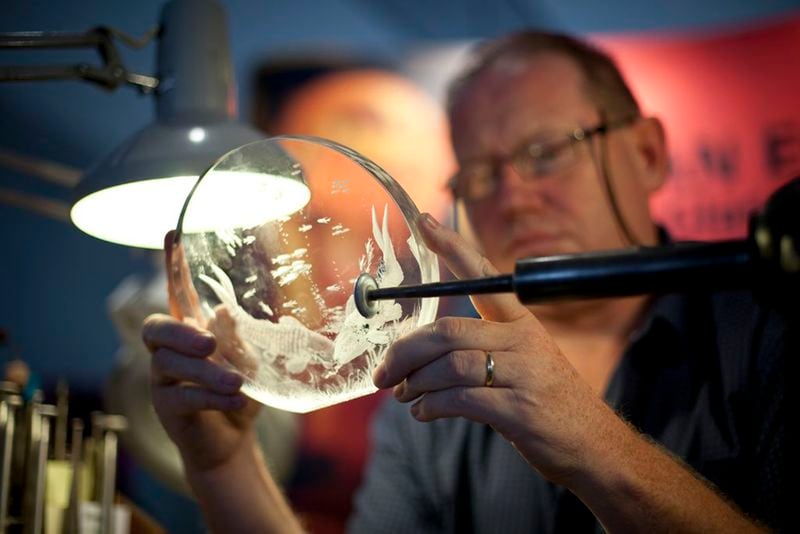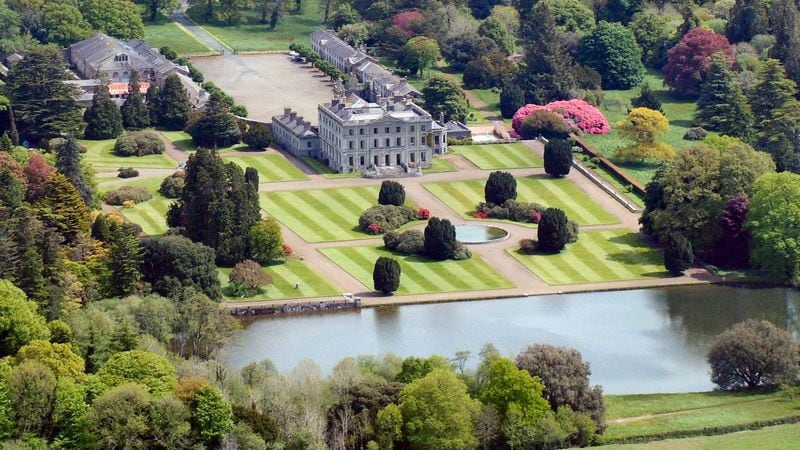There is something about trains that has captivated me since childhood. Maybe it’s the gentle rocking back and forth as it crisscrosses the country; maybe it’s the mournful sound of the train’s whistle in the night, with its promise of places yet to be seen — and perhaps, best of all, it’s the knowledge that I’m not squeezed into a seat on a plane.
Alas, living in the U.S., I’m not able to indulge my passion for trains much, which makes it all the more wonderful when I’m somewhere where I can. That most recent somewhere was Ireland, and the train wasn’t your common garden variety type, but the Belmond Grand Hibernian.
Officially launched in August of 2016, the Grand Hibernian is a sister train of other Belmond acquisitions, the Venice-Simplon Orient Express and the Royal Scotsman. Often referred to as “country houses on rails,” they embody the very essence of luxurious train travel.
I left Dublin’s Heuston Station for a two-night “Taste of Ireland” tour (north to Belfast on the first day and south again to Cork on the second), but there is also a four-night “Loughs and Legends,” or the two itineraries can be combined for a real Irish adventure.
I found that many of those onboard didn’t really care where they were going; it was the train itself that was the appeal. Limited to just 40 passengers, and with a multi-national staff dedicated to fulfilling your every wish, it seems like one giant house party on wheels.
Just name your pleasure in the Observation Bar Car, and the genial bartenders can whip it up — everything from specialty cocktails using gunpowder gin to Manhattans and Whiskey Sours for bourbon lovers such as myself.
About the only thing they can’t conjure up is the lifeblood of Ireland, Guinness on tap, as there is no room for kegs, but they do have a supply of Draught in cans.
Meal times in the two exquisitely appointed dining rooms are an excellent way to get acquainted with your fellow passengers. With tables set for four (the Wexford) and six (the Sligo), friendships start to develop with the first dish. My dining companions ranged from an Ohio couple and a Californian to a lady from Edinburgh and a gentleman from Paris.
If dinner is dignified and refined, after-dinner in the bar car gets a bit livelier, when the Jameson flows and the entertainers (a mix of balladeers and musicians) start to warm up.
The train’s public spaces ensure that Ireland’s greatest poet, William Butler Yeats, had it right when he penned, “There are no strangers here; only friends you haven’t yet met.”
Once the frolicking ends and it’s time to retire for the night, guests make their way to one of 20 ensuite cabins that combine traditional design and modern amenities. Wood paneling and original watercolors are softened by the addition of soft woolen throws and vases of fresh posies. And since the train “stables” overnight, you’re guaranteed of a restful sleep.
I loved the warmth of my cabin and it’s “oh-so-comfortable” bed, although I have to admit the bathroom provided some challenges — most notably taking a shower without bruising elbows and barking shins.
While, as I said earlier, some train aficionados don’t care where they go, I’m as enamored of the destinations as I am of getting there. On Day 1, we headed north to Belfast, crossing the imaginary border that separates the Republic of Ireland from Northern Ireland, part of the United Kingdom.
There are currently no border formalities between the two, but who knows what Brexit may bring. Our afternoon tour of Belfast included two stops – the first an area associated with Ireland’s “troubles,” and the second, a tribute to an earlier tragedy.
Black taxis took us to Belfast’s two once-volatile neighborhoods — Shankill Road, where the residents are Protestant, and The Falls, a Catholic enclave — the scenes of much violence during the period of unrest beginning in the 1970s.
Since the Good Friday Agreement 19 years ago, things have quietened down. While people of both religions move freely back and forth during the day, our guide informed us that the gates are locked every night.
Our destination was the Peace Wall, actually a series of 48 walls (most of them in Belfast) totaling 22 miles in length. Three times as high as the Berlin Wall, they have come to be a tourist attraction and a form of artistic expression. Murals adorn the walls, and hopeful messages from dignitaries such as Bill Clinton and the Dalai Lama are scrawled across their surface (visitors are encouraged to add their own message).
The current time frame calls for all 48 of the walls to come down by 2023, but their popularity with visitors may alter that plan.
Our next stop was the Titanic Museum, opened in 2012 on the site where the ill-fated ship was built and outfitted. Its stunning angular design is meant to mimic the prows of a ship, although the 3,000 individual silver aluminum shards on the facade have led to it being nicknamed “the ice berg.”
With due respect to imitation museums in places such as Pigeon Forge, Tennessee and Branson, Mo., this is the real deal and presents a fascinating arena to tell the story of the people, place and events that shaped the tragedy.
Our second day’s journey took us back into the Republic of Ireland to its southernmost county, Cork. Along the way we traveled through the aptly named Golden Vale skirting Tipperary, and through Kilkenny, a lush farming area where the best Irish cheeses come from.
Credit: Tourism Ireland
Credit: Tourism Ireland
Cork is home to Ireland’s oldest city, Waterford, founded by the Vikings in the ninth century, and today, the location of one of the country’s most famous exports, Waterford crystal. Grand Hibernian passengers have the opportunity to go behind the scenes and watch as master craftsmen blow the glass and etch designs into a variety of crystal objects, from long-stemmed wine glasses to trophies for various sporting events.
As fascinating as this was, I was even more enthralled with the other stop – at Curraghmore House and Estate, seat of the Marquis of Waterford (the current earl is the ninth to hold the title and afternoon tea is presided over by the lady of the manor).
Credit: Tourism Ireland
Credit: Tourism Ireland
The original castle was built in 1205 when the owners learned that King John would be visiting and expected a place to stay worthy of his stature. The king (remember him from the Robin Hood tales?) proved that not only was he evil, but also inconsiderate in that after the family practically bankrupting themselves to welcome him, he never showed.
No matter — over the centuries, the family fared better than King John, although with considerable personal tragedy, which guests learn about from portraits in the entrance hall.
My favorite spot was the unusual shell grotto begun in the mid-18th century by the then-mistress of the manor, Catherine de la Poer. The interior is completely covered in seashells that Catherine is alleged to have glued on herself in 261 days using a concoction of clay, pig’s urine and animal blood.
Sounds like a lot of work, but considering that Catherine had 15 children to attend to, she may have been the originator of the “She Shed.”
As we made our way back to the Grand Hibernian, I saw her from a distance — sparkling cobalt blue against a green backdrop of hills and valleys, and was reminded again of how much I love trains.
———
Patti Nickell is a Lexington-based travel and food writer. Reach her at pnickell13@hotmail.com.
IF YOU GO ON THE GRAND HIBERNIAN:
FYI: belmond.com
About the Author








